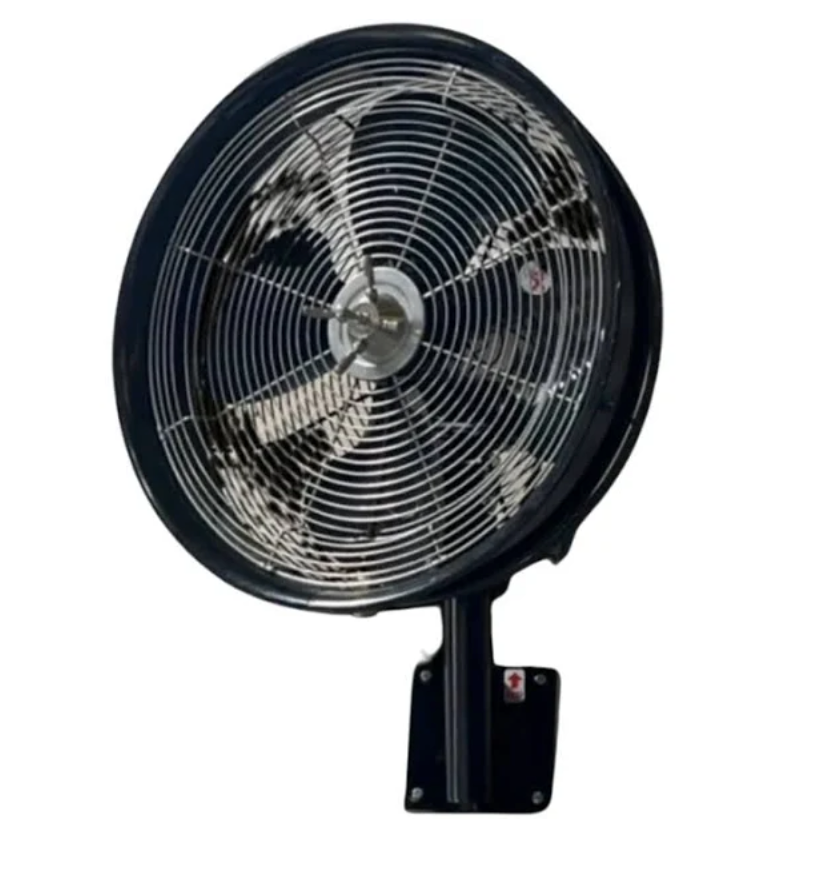Discover the Best Types of Grills for Joyful Outdoor Cooking
Have you ever stood in front of a wall of types of grills, scratching your head, and thought to yourself - "Which one is right for me?" You're not alone.
We've all been there. There's something primal about the sizzle of meat on a grill, that rich flavor charcoal imparts... it calls to us like a moth to flame. But picking out the perfect tool can be overwhelming.
You see gas grills with their quick heating time, pellet grills promising mouthwatering smoky goodness and electric ones whispering convenience into your ears. So many choices!
I remember my first grill purchase – an old-school charcoal beast I nicknamed ‘The Inferno’. The excitement was real but so was the confusion!
We're in this journey together, right? Let's explore different types of grills. We'll check out everything from charcoal marvels and beyond.
Charcoal Grills: The Heart of Outdoor Cooking
Picture this - a summer evening, the aroma of sizzling steaks wafting through your backyard. That's charcoal grilling for you. It brings an unmistakable smoky flavor to food that many outdoor cooks and foodies crave.
All charcoal grills share basic operating principles, like air intake at the bottom and an exhaust vent at the top. These simple features allow for amazing temperature control, letting grill masters sear their steak just right or slow-cook chicken wings to perfection.
Cooking Tougher Cuts on Charcoal Grills
Tougher cuts of meat need love too. Charcoal grilling is the perfect way to give tougher cuts of meat the love they deserve. Extended periods over indirect heat can work wonders here.
The trick lies in controlling your fuel source – in this case, charcoal. Just like stoking a fireplace or firepit on cold winter nights, managing how much fuel goes into your grill makes all the difference between mouth-wateringly tender ribs and...well let's not go there.
You see with proper management; charcoal imparts such rich flavors onto foods that even tougher cuts come out tasting divine after being cooked slowly under its gentle heat. Think brisket so soft it melts in your mouth or pulled pork sandwiches that are full of juicy goodness.
Different types of charcoals can be used as well depending upon personal preferences - lump hardwood gives off intense heat whereas briquettes offer more consistent temperatures which typically remains constant over extended cooking times.
And if you want to add some extra oomph (read smokiness) while BBQ-ing, try using flavored wood chips. Just remember to soak them in water before adding them on the charcoal so they smolder and smoke rather than burn outright.
So next time you fire up your grill, don't just think burgers or hot dogs – get adventurous. Try cooking tougher cuts like ribs or brisket over indirect heat from a bed of well-managed coals. Trust me; it's an experience that will leave you asking for more.
Charcoal grills bring the heart of outdoor cooking to your backyard, offering unbeatable smoky flavors and excellent temperature control. Mastering charcoal grilling is all about managing fuel – it's what turns tough cuts into melt-in-your-mouth masterpieces. Get adventurous with different types of charcoals or add some extra smoke using flavored wood chips. But don't forget, slow-cooking requires patience and precision for that perfect taste.
Open Grills: A Timeless Classic in Outdoor Cooking
When it comes to the thrill of grilling, open grills hold a special place. They're one of those types of grills that make your backyard barbecue an event to remember.
An open grill is all about fire configuration and food placement. You can adjust the intensity of heat by moving the coals or changing how close your food is to them. But remember, this type needs more attention because there's no lid.
The Art and Science Behind Open Grilling
To master an open grill, you need both artistry and understanding science. It's not just about throwing meat on hot coals; it’s also considering factors like fuel source and temperature zones.
Different types of charcoal can affect taste subtly but significantly. Lump charcoal imparts a rich flavor while briquettes provide consistent heat over extended periods - perfect for tougher cuts.
Sizzle Factor with Open Fire Configuration
If we talk about visual appeal nothing beats an open flame dancing around succulent chicken wings or juicy burgers. This direct heat cooking process gives a beautiful sear locking in juices making every bite moist yet crisp outside - now that's what I call sizzle factor.
Fuel Sources Matter Too.
You might think any wood pellet would do as long as it burns well but choosing the right kind adds another layer to flavors outdoor cooks adore – smoky notes from oak or sweet undertones from applewood pellets are examples worth trying out.
Making Use Of Temperature Zones In An Open Grill
Cooking on high-heat constantly may char food quicker than expected especially delicate ones like fish. This is where understanding temperature zones in an open grill becomes crucial.
You can easily create these by spreading coals more densely on one side than the other, allowing for both direct grilling and indirect grilling on the same surface. It’s all about controlling that flame.
Whether you're a novice or a seasoned grill master, using an open grill offers unlimited culinary possibilities - all under the great outdoors.
Open grills are the heart of backyard barbecues, needing careful attention to fire setup and where you put your food. Becoming a pro is a blend of art and science - thinking about what kind of fuel you use, making temperature zones for perfect cooking, and realizing that different charcoals or wood pellets can slightly change flavors. The whole game here is controlling the flame to get that mouth-watering smoky taste we all love.
Covered Grills
When it comes to outdoor cooking, covered grills are the grill master's secret weapon. These fantastic machines differ significantly from other types of grills due to their unique cooking methods.
Imagine a cozy winter evening around your fireplace or firepit. You're trying to cook some chicken wings on an open flame. But what happens? They get charred outside while remaining raw inside - not exactly appetizing. This is where covered grills step in and save the day.
Advantages of Covered Grilling
The biggest advantage that these beauties offer compared to other grill types, such as gas grills or charcoal grills, lies in how they control temperature zones during the cooking process.
A lid traps heat and creates an oven-like environment for your food. It circulates heat evenly around all sides instead of blasting them with direct heat like you would on an open grill. Boom.
Your chicken wings are cooked perfectly—crispy on the outside, juicy within—with none of those nasty burnt bits. Plus, who can resist that smoky flavor?
In fact, most BBQ enthusiasts swear by this method because it ensures even heating and perfect results every time - no matter if you're dealing with tougher cuts or delicate fish fillets.
Bonus tip:If you love a good smoke ring on your meat (who doesn't?), then here's another reason why covered is better: wood pellet smoking works best under cover.
Last but certainly not least: weather protection. Rainy days can't stop us when we've got our trusty covered companion ready at hand.
No wonder outdoor cooks and foodies crave these grills.
So there you have it. Covered grilling is the way to go for consistent results, rich flavors, and all-weather BBQs. Check out what other people are saying about covered grills.
Experience the magic of covered grills in your outdoor cooking adventures. These BBQ masters give you control over temperature zones, making sure your food cooks evenly and is full of flavor - rain or shine. Whether it's juicy chicken wings or a succulent fish fillet, these reliable pals deliver flawless results every time. Don't forget, that irresistible smoke ring from wood pellet smoking is unbeatable.
Vessel Grills: Unique Features and Suitable Food Types
If you're a fan of the traditional cooking method, then vessel grills might be your next best friend. They are a type suited for specific cooking methods and foods.
Why so? Let's explore together.
The Charms of Vessel Grilling
Akin to culinary artistry, vessel grilling gives an extraordinary twist to typical outdoor cookouts. This technique is known for its unique features that provide enhanced control over temperature zones during the cooking process.
This ability allows grill masters like yourself to ensure food cooks evenly across all sections without being too raw or overly charred. The result? A well-grilled dish that will make everyone at your backyard party crave more.
Fuel Sources and Flavor Profiles
When it comes to fuel sources, vessel grills can use either charcoal or gas as their primary heat source. While gas typically remains constant in terms of temperature regulation, charcoal imparts a rich flavor that many foodies crave. Ask yourself this question: Do I want efficiency or taste?
Suitable Foods for Vessel Grilling
Vessel grills excel when dealing with tougher cuts of meat such as ribs or brisket due to their slow-cooking capacity. Over extended periods these tough meats transform into tender delights under controlled heat distribution provided by the dome-like structure characteristic of these types of grills.
- Ribs turn fall-off-the-bone tender,
- Briskets gain succulent textures,
- Pork shoulders become mouthwateringly juicy - all thanks to patient low-and-slow cooking on our beloved vessel grill.
Make Your Next Cookout an Adventure
Try a vessel grill now to experience versatility and intense flavor that other grills cannot match. These grills offer both versatility and flavor intensity that's hard to match with other types of grills.
It may feel overwhelming initially, but remember, the more you do it, the better you get. So why not kick off your grilling adventure today? Tap into your inner barbecue guru and dive into this incredible world.
These vessel grills, ideal for those who love traditional cooking methods, bring a unique spin to your outdoor barbecues by giving you superior control over temperature. They work brilliantly with both charcoal and gas as fuel sources, especially when it comes to slow-cooking tougher cuts of meat like ribs and brisket until they're wonderfully tender. Although getting the hang of these grills might seem daunting at first, remember that practice leads to perfection. So why not embark on your vessel grilling journey today?
Rotisserie Grills: Spinning Your Way to Deliciousness
You've likely seen a rotisserie grill in action at your local supermarket, spinning chickens round and round. But did you know these grills offer unique advantages for home use too? Let's explore the particulars.
The Magic of Rotisserie Cooking Methods
A major appeal of rotisserie grills is their cooking method. The food rotates slowly, basting itself in its juices as it cooks evenly from all sides. This technique gives an irresistibly crispy skin on poultry or that beautiful crust on roasts we all crave.
No more turning chicken wings over a scorching flame. And because this cooking process doesn't need direct heat, flare-ups are history. Less hassle means more time sipping your favorite beverage while you watch dinner cook itself.
Rewards Beyond Taste Alone
Beyond amazing flavor and texture, there are practical benefits too. Unlike open grills where temperature fluctuates wildly with wind or fuel levels; here the temperature typically remains constant making consistent results easy to achieve.
This feature also helps when hosting parties - no one likes serving half-cooked meat to guests. Plus, once loaded up, rotisseries can handle large quantities of food without needing extra attention – perfect for those big family gatherings.
What types of foods work best?, you ask? Chickens are a classic choice but don't stop there; try pork roasts or even pineapple slices for something sweet and unexpected.
Smokers
If you're a BBQ enthusiast, the mention of smokers probably brings to mind tender meat falling off the bone and full of rich flavor. Smokers are fantastic tools for outdoor cooks who love low-and-slow cooking methods.
What makes smokers so special? They use indirect heat and smoke from wood or charcoal to cook food over extended periods. This process results in that succulent texture and smoky taste that foodies crave.
Achieving the Perfect Smoke
The secret behind achieving perfectly smoked dishes lies in temperature control. The right balance ensures your meat doesn't dry out but gets cooked thoroughly while absorbing all those delicious smoky flavors.
To get this just right, start with choosing an ideal fuel source like hardwoods or fruitwoods depending on what flavor profile you desire for your meal. Also, remember that maintaining a consistent smoking temperature is crucial - typically remains constant between 225-275 degrees Fahrenheit for most meats.
You may ask why tougher cuts? Well, these pieces benefit from long cooking times at lower temperatures which break down tough connective tissues resulting in mouth-wateringly tender morsels. Here's some more insight into how grills work.
Besides patience (yes. slow-cooking requires it), managing airflow within your smoker also plays a significant role as it affects both flame intensity and smoke density. And trust us when we say – mastering this can elevate your status from novice backyard chef to seasoned grill master.
- Temperature Zones: For best results divide your smoker into two sections; one side should contain hot coals whereas the other stays coal-free serving as cooler zone where actual cooking happens through radiant heat coming off hot coals.
- Wood Selection: Choose wood carefully as it significantly impacts the flavor of your smoked dishes. For instance, hickory and mesquite lend a robust taste while applewood imparts a milder, sweet smoke.
Chicken wings, ribs, brisket - you name it. Smokers are a game-changer in the outdoor cooking scene. They don't just elevate your BBQ experience but also give an amazing twist to traditional dishes. So if you're pumped to level up your culinary skills outdoors, smokers are definitely something to think about.
you're using, as different woods impart unique flavors. Hickory and mesquite are popular choices, but fruitwoods like apple or cherry can add a sweet touch to your BBQ. But remember: patience is crucial in smoking; it's a slow-cooking method that rewards those who wait with deliciously tender, flavorful meat.
Open Pit and Campfire-Style "Grills"
If you've ever roasted marshmallows over an open flame, then you know the simplest type of grilling. Open pit and campfire-style grills take us back to our roots in outdoor cooking.
This style of grill offers its own set of unique advantages for different types of food and methods. But what makes them so appealing? Well, they are typically associated with hearty meats that require direct heat and high temperatures for an extended period.
Cooking Over an Open Fire
The charm here lies not just in the method but also in the experience itself - being outdoors surrounded by nature while your food cooks slowly over glowing embers. This process tends to produce rich flavors that other types cannot replicate.
An open fire provides excellent heat control as well; hotter flames cook faster whereas cooler areas allow slower cooking. It's like having multiple temperature zones at your disposal. However, it does require some skill to manage these conditions effectively.
Beyond offering a distinctive taste, open pit or campfire-style grilling can be more engaging than using modern gas or electric grills because it involves building up a good fire first before even starting on the actual meal preparation. That's why this method is popular among outdoor cooks who love challenges.
Learning about how charcoal works will certainly improve your game when handling these traditional forms of barbecue grill.
Discover Different Types of Grills at BBQ Outfitters
Grilling is an art, a craft that transforms ordinary food into extraordinary. The type of grill you use plays a pivotal role in this transformation.
The beauty of charcoal grills lies not just in the rich smoky flavor they impart but also their versatility with tougher cuts. Open grills bring fire and food together in harmony while covered ones offer varied cooking methods.
Vessel and rotisserie types show us there's more to "types of grills" than we think - it’s about how your food cooks, dances on the heat source!
Smokers remind us patience pays off by rewarding extended cook times with tender flavorful meat. Lastly, open pit or campfire-style ‘grills’ take us back to our roots - outdoor cooking at its purest form.
Your next BBQ adventure awaits, contact BBQ Outfitters today! Happy Grilling!












